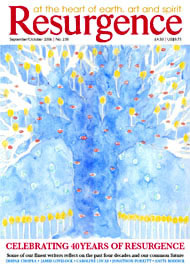THINGS WOULDN’T BE the same without Arvon: it represents a different understanding of what it means to be a writer. Against the E. coli capitalism of the current book world and its dismaying evaluations of worth, against even the massive creative writing industry itself with its talk of success in the ‘real world’ (as if the inner world is not real), Arvon flies the dwindling flag of imaginative integrity.
This is because it has largely remained – magically, mysteriously – faithful to its original vision. In 1968, a pair of young poets with a “mercurial mischief” about them, Johns Fairfax and Moat, agreed that “the only person who can teach the technique of writing reliably is an experienced writer.” They also agreed that the writer’s other problem is loneliness (they were in a rural pub).
Arvon’s motto is “The fire in the flint shows not till it be struck”. This marvellous little book recounts what happened in the flint-knapping, ‘prehistoric’ period. The battle for hearts and minds; the extraordinary cast of characters that rallied round (including the mage figure of Ted Hughes); the lucky purchase of the first of the four centres, Totleigh Barton in Devon – and the finding of its famous table; or the manner in which the unique Arvon ‘way’ materialised, as if through some “ghostly prescription”, on the first ad hoc course, taken in Dartington with a bunch of teenagers. The Big Bang moment? When one of these interrupted a lecture on prosody by muttering, “I thought we were here to do writing.”
Moat believes in light-heartedness, the sort that gave Hermes wings on his feet. His account is funny as well as moving. “It’s a primary Arvon mystery how Fairfax and I, who have a focused inability, in fact it often seems a perverse disinclination, to sell anything of our own, were … unfailingly able to interest people in Arvon.” True power is modest and hermetic, not brash. Moat and Fairfax may have done more for post-war British letters than anyone else alive.
Their primary tenet is that the imagination is deeply “integral to each individual’s self-expression”. An Arvon course offers a four-day space to play. It is a wood in which, as Moat puts it, you can safely get lost in order “to arrive at yourself”. It is totally non-exclusive and, in theory, nothing to do with external achievement. Life-changing moments can happen, both for tutors and for students. Exhaustion, pain and disappointment can happen, too: it is not all buzz and roses. It is life, as writing is life.
Moat expresses misgivings about recent tendencies, however: “Suddenly platform, profile, publication, success and even celebrity have been insinuated into [Arvon’s] value system.” This threatens the very spirit of the founding tenets, although he dismisses a claim to any “phoney high ground”. His oracular suggestion is to reconcile the two opposing values “via an overview of unity”. I think Moat and Fairfax should be heeded on this one, and fast. Let not the desert encroach any further on the four Arvon oases.
Adam Thorpe’s latest book is a collection of short stories: Is This the Way You Said?







